How To Boost Your Ecommerce Sales through Funnel Optimization
A sales funnel is the strategic path that guides people from initial awareness of your brand to becoming loyal, repeat buyers. Optimizing your sales funnel is crucial for online business success.
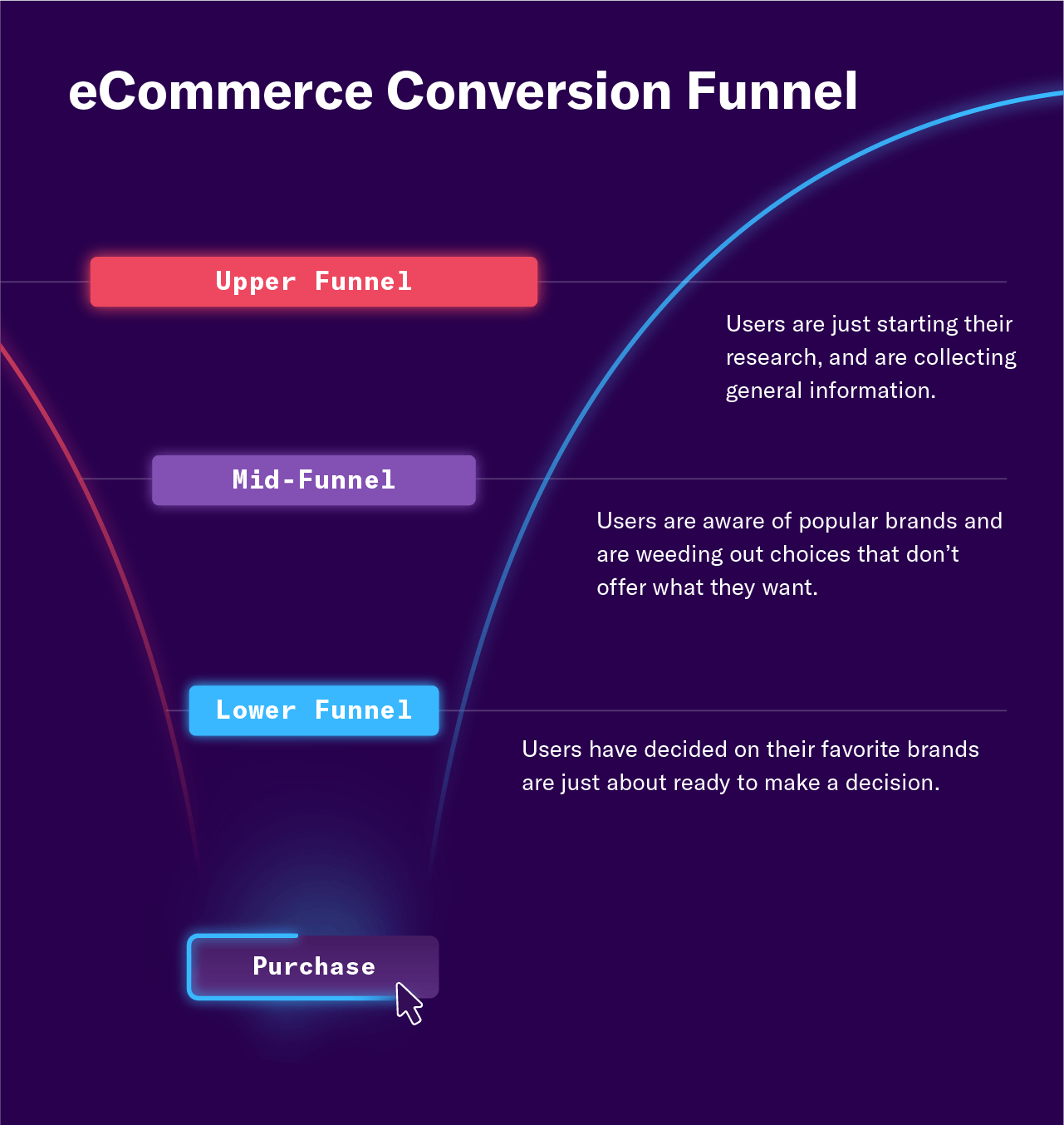
For Ecommerce brands, driving traffic to your online store is only half the battle. The real challenge lies in converting those visitors into paying customers through strategic sales funnel optimization.
According to a Baymard Institute study, the average Ecommerce site loses roughly 75% of potential sales at checkout due to website usability issues and lack of trust--the dreaded abandoned cart.
These high abandonment rates demonstrate how most Ecommerce sites fail to effectively guide visitors through the buyer's journey to purchase. Without a streamlined sales funnel, you end up leaking leads and missing revenue at every stage.
This is where understanding and optimizing your Ecommerce sales funnel pays huge dividends.
A sales funnel encompasses each touchpoint and interaction that customers have with your brand on their path from awareness to conversion. It strategically nurtures visitors from the initial stage of discovering your products all the way through becoming loyal, repeat customers.
By analyzing each phase of the customer journey and addressing friction points, you can craft an optimized funnel that seamlessly converts at a much higher rate. The end result is accelerated growth and dramatically increased online sales.
The Ecommerce Funnel Stages
The sales funnel consists of several stages that customers move through on their journey from strangers to satisfied buyers.
Awareness
The first stage is awareness - this is when people first discover your online store, often through search engines, ads, or word of mouth. Strong SEO, pay-per-click ads, affiliate marketing, and social media help drive targeted traffic to your site.
Brands that create strong content do so with the strategy to create shareable content, but also content that ranks well for search engines.
Birchbox is an example of strong content to support their marketing initiatives, and generate new Top of Funnel traffic, with their blog:
Interest
Once people arrive at your store, you want to immediately capture their interest.
An optimized landing page greets visitors with a compelling headline, strong visuals, and a prominent call-to-action button to guide them further into your sales process.
If we continue with Birchbox as an example, the blog post highlights different products in their inventory that address the challenges that people are searching for.
These links bring shoppers to a Product Page, where they can move down the sales funnel.
Strong product pages are also essential at this stage - engaging copy, lifestyle imagery, reviews, and clear CTAs all help create interest in your offerings.
Evaluation
Next, customers enter the evaluation stage where they assess your products and prices.
Product recommendations that match customer intent are key here, as are cross-sells and upsells.
Here’s a Birchbox product page, which highlights the product details, benefits, customer reviews, and a clear Call To Action to Add To Cart.
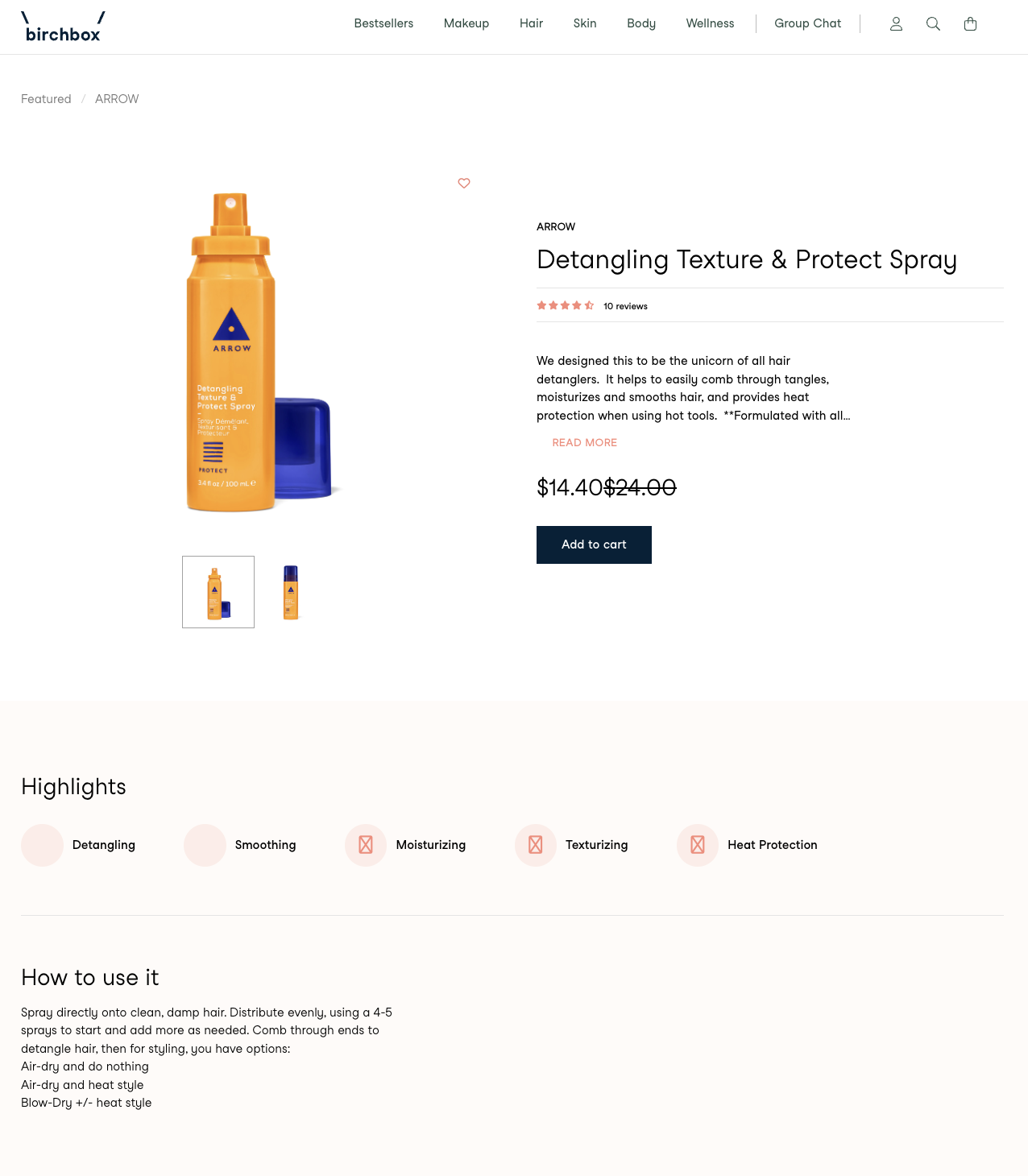
Your shopping cart experience also affects evaluation - a seamless checkout process, trust symbols like reviews and certifications, and cart abandonment emails all help minimize hesitation at this stage.
Purchase
The purchase stage is where transactions happen.
Per Shopify, "If you have below 0.5%, you likely have room to improve, and if you are above 3.3%, you have a very good ecommerce conversion rate—in the top 20% of all Shopify stores.
A user-friendly checkout process encourages completion - prefilled info, guest checkout, and multiple payment options remove friction.
Birchbox allows shoppers to easily see what is in their cart, while staying on the Product Page.
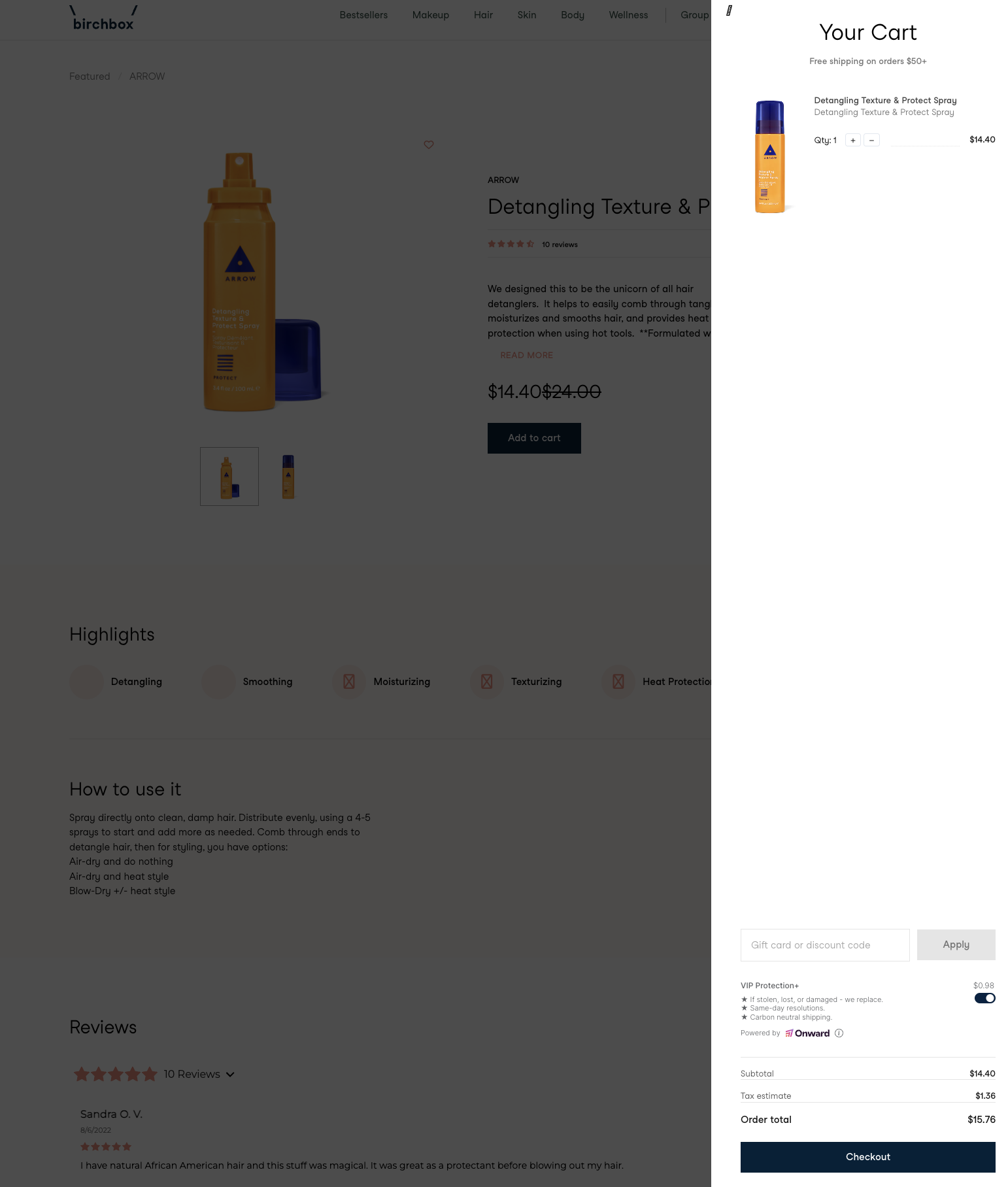
And a simple check out process, for existing members or guests (which requires a few more fields to add data)
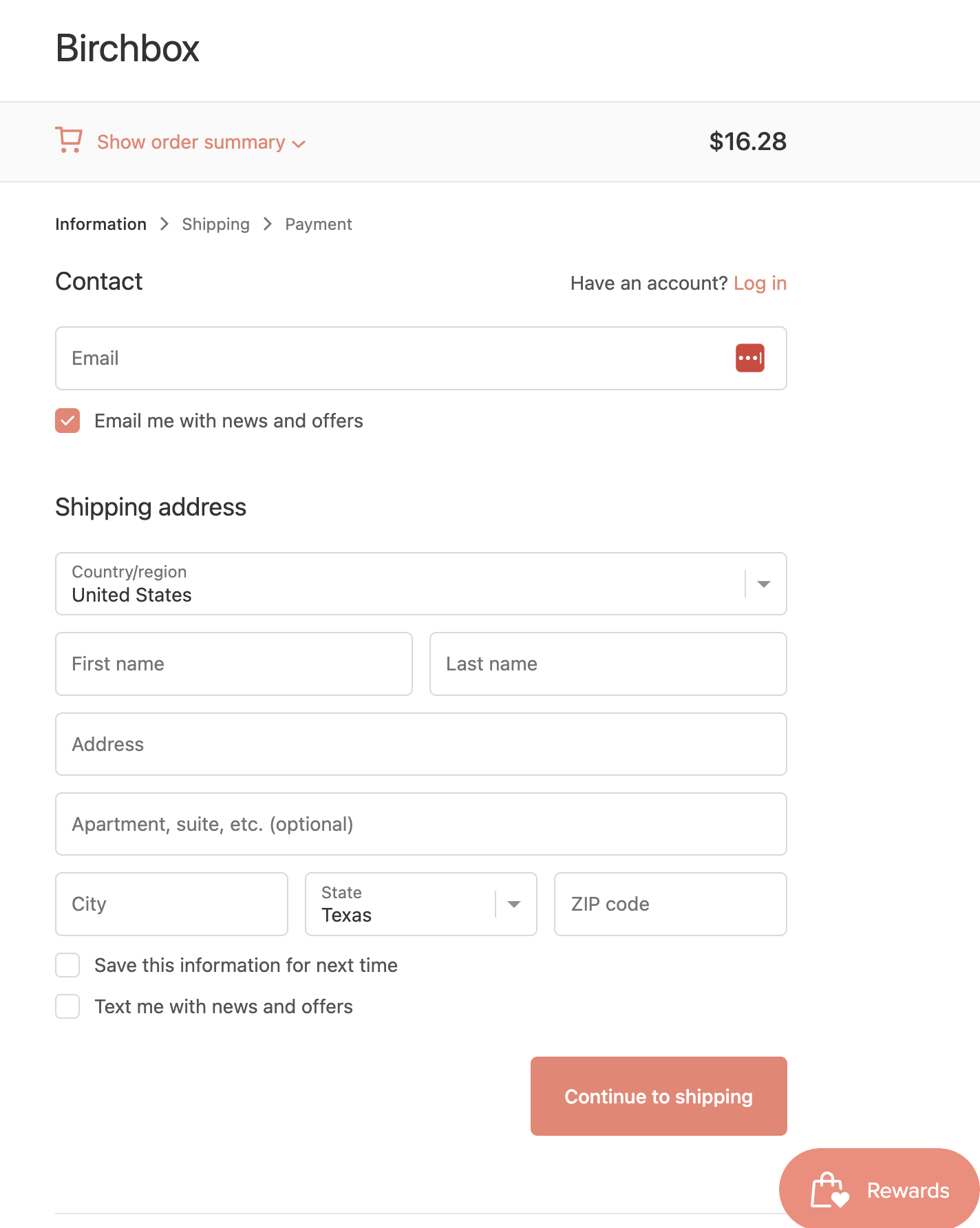
Post-purchase, a confirmation page and order tracking info reassure customers while a thank you email delights them.
Retention
Finally, the retention stage focuses on turning buyers into loyal, repeat customers. Loyalty programs with points, VIP access, and early sales all provide incentives.
Post-purchase follow-ups like surveys, re-engagement emails, and personalized recommendations make customers feel valued.
Tools like Recharge, Apostle, and Bold Subscriptions all help with driving recurring revenue through reorders.
Step 1: Optimize Your Awareness Stage
The awareness stage is the first and most critical part of the Ecommerce sales funnel. This is when you want to drive targeted traffic to your online store so potential customers discover your products for the first time. There are several key strategies for optimizing your awareness stage:
SEO
Search Engine Optimization (SEO) helps people find your website through organic search results. This includes doing keyword research to determine what terms your buyers are searching for and then optimizing your site content accordingly.
Research relevant keywords that your potential customers are searching for and then optimize your website content around those terms.
Writing blog posts and guides targeting those keywords can also help boost your search rankings and domain authority.
Additionally, build high-quality backlinks to your site by having other industry websites link back to you.
This signals to search engines that your site is reputable. You can analyze your organic search performance in tools like Google Analytics and Search Console to refine your keyword targeting and SEO efforts over time.
Over time, you will get key pages ranking in Google for the critical searches you are trying to rank for, like Birchbox's results for "subscription beauty boxes":
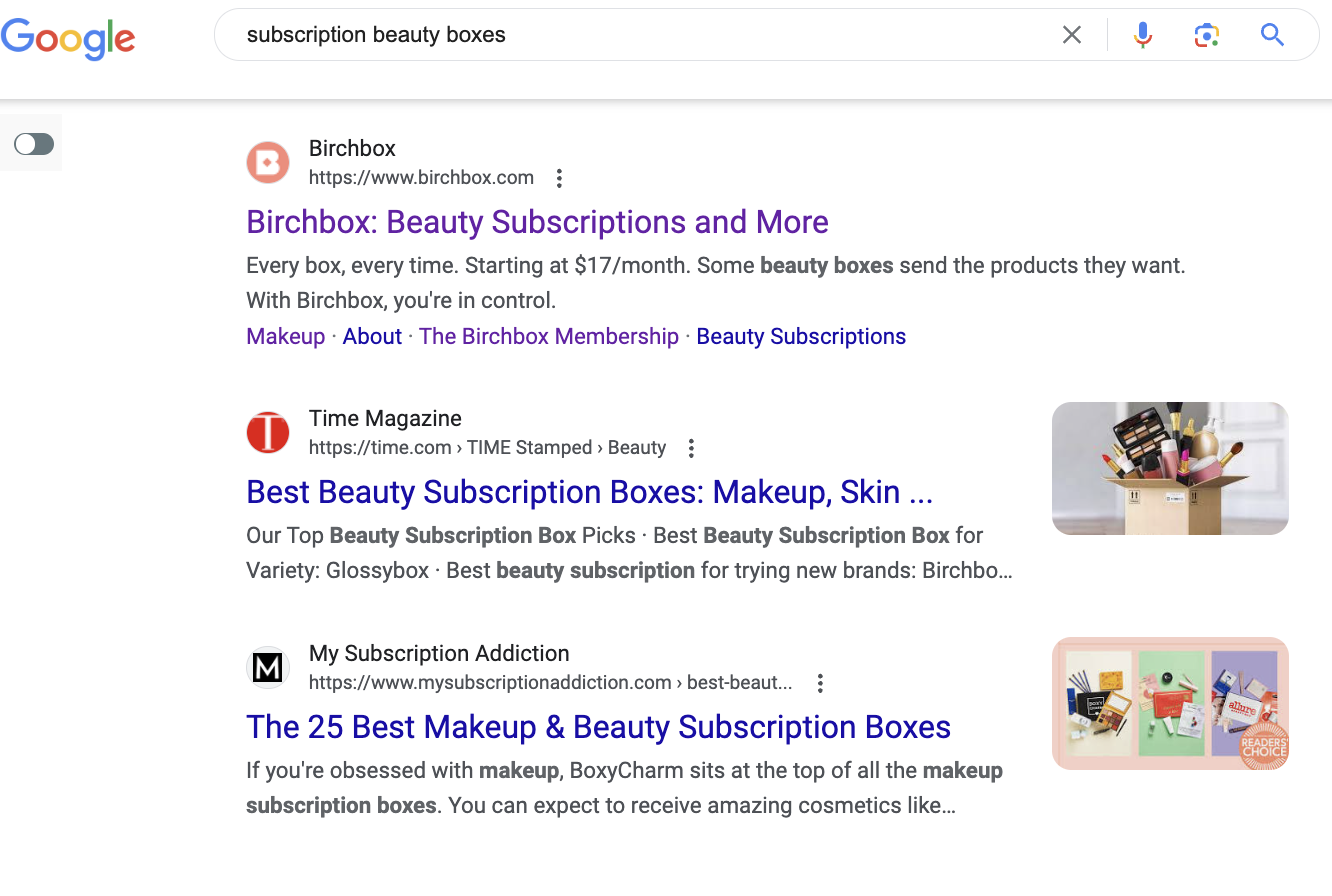
Run Pay-Per-Click Ads
Running pay-per-click (PPC) ads is a fast way to get your Ecommerce store in front of motivated buyers actively searching for your products or services.
PPC ads allow you to target prospects right when they are looking to make a purchase.
Create PPC campaigns on Google Ads and Microsoft Ads to show up in search results. When users search for keywords related to your offering, your ads can appear above or alongside the organic results. You only pay when someone clicks your ad, making this an affordable way to reach new customers.
For example, Birchbox can target keywords like "subscription makeup" to try to get customers to click on the ad and visit the Birchbox site. With a compelling product image and headline, coupled with compelling copy that speaks to the customer's needs and intent, they can get more visitors to their site to purchase.
Make sure to optimize your landing pages for conversion as well - people who click your ads should arrive at a relevant page with clear messaging, images, reviews, and calls-to-action.
Beyond search ads, you can run PPC campaigns on Facebook, Instagram, TikTok, and other social media platforms. Target your ads to specific demographics, interests, and behaviors that align with your customer avatar.
A/B test different versions of your ads including images, headlines, copy, calls-to-action, landing pages, and offers. See what resonates best with your audience and optimize accordingly.
Closely monitor performance metrics like cost-per-click, click-through rate, conversion rate, and return on ad spend. Kill underperforming ads and scale winners.
With an optimized, data-driven PPC strategy, you can increase your Ecommerce store's visibility and drive targeted traffic ready to make purchases.
Social media
Leveraging social media networks directly is also an affordable option to raise awareness. Create social posts showcasing your products in an inspirational, lifestyle-oriented way.
Use relevant hashtags to expand your reach to interested users. You can also run paid social campaigns with special promotions and discounts, targeting lookalike audiences similar to your existing customers.
Partnering with influencers and bloggers in your niche can further drive word-of-mouth exposure and referral traffic.
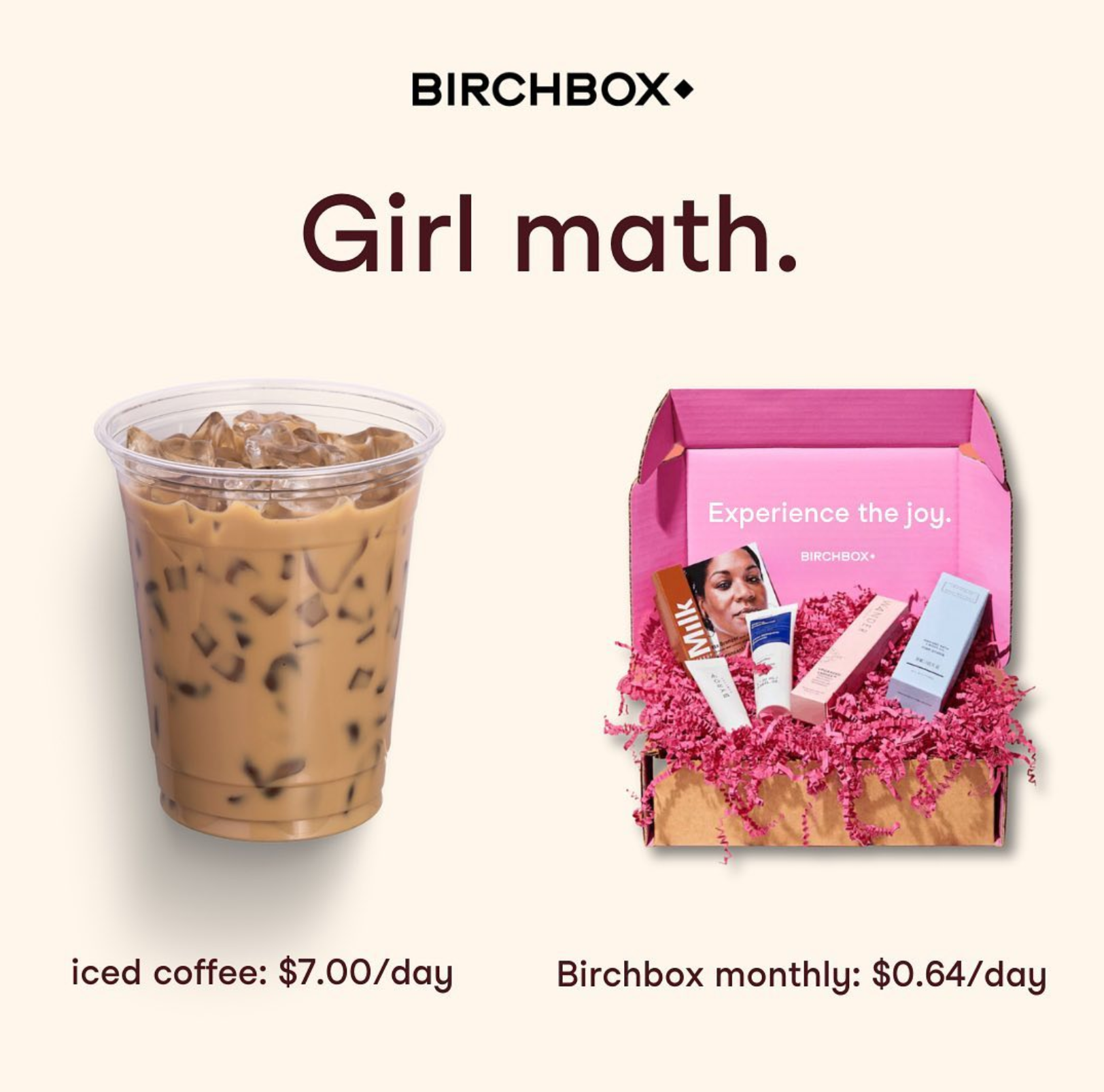
Affiliate marketing
Affiliate marketing partnerships allow others to actively promote your Ecommerce store in exchange for a sales commission. Seek out relevant blogs, influencers and niche sites that align with your products and pitch them on becoming an affiliate.
Provide creatives, promo codes and sales reporting tools to make it easy for them.
Here is an overview of the Birchbox affiliate program, which offers 5-10% per sale.

Create compelling offers and CTAs
In addition to driving traffic, you need compelling offers and calls-to-action (CTAs) to capture visitor attention immediately.
Free shipping, discounts, risk-free trials, and content offers all motivate action. Ensure these offers are prominently displayed through CTAs, banners, pop-ups, and exit intent overlays.
Here's an example of Birchbox offering a discount on their product, to incentivize more conversions from the Product Page:
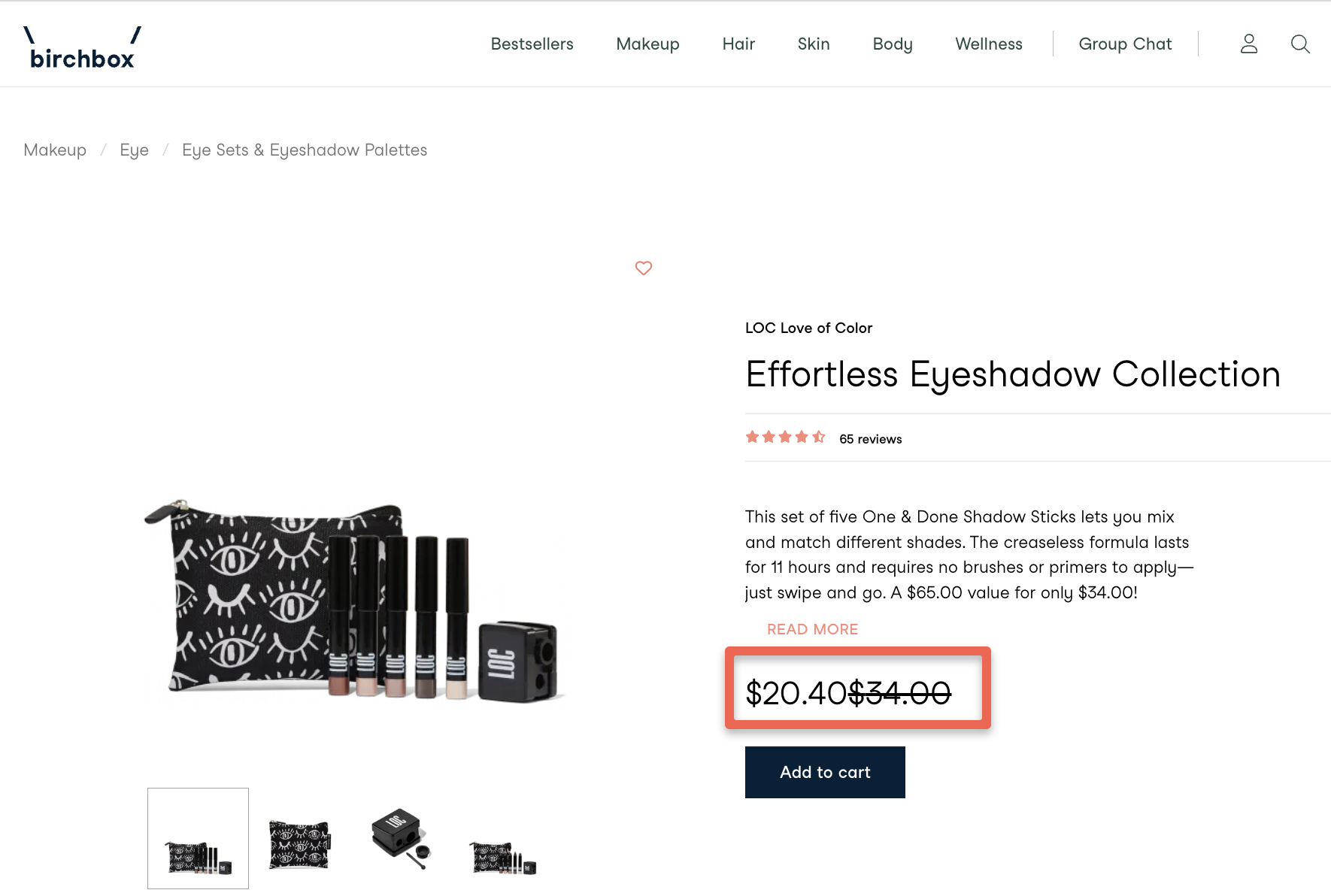
Step 2: Optimize Your Interest Stage
Once you've driven targeted traffic to your Ecommerce store, the next step is converting visitors into interested prospects ready to evaluate your products. Your website elements at this stage should capture attention and present compelling reasons to consider purchasing.
Here are some tactical ways to create great landing page experiences:
Clear messaging
Your landing pages are the first on-site touchpoints, so their design and messaging are critical.
Clear, benefit-focused headlines in large fonts immediately convey your value proposition.
This is an example of a Birchbox blog post--the topic of the post is incredibly clear both visually and in text, and there are links to the best products that Birchbox offers:
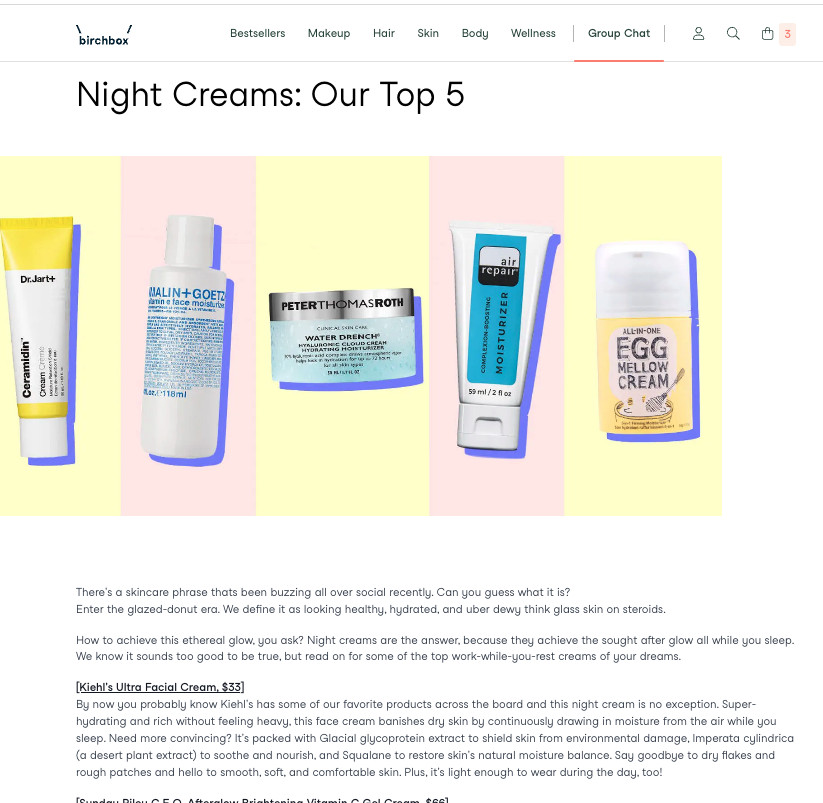
Strong visuals
High-quality images and videos showcase your products in an aspirational lifestyle context. Minimal distractions keep the focus on your CTA button above the fold.
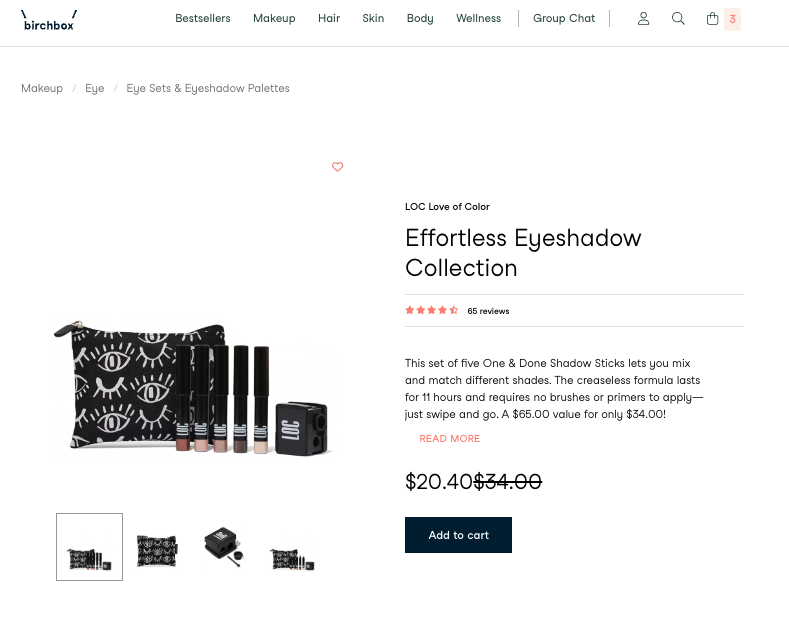
Prominent CTAs
Strong calls-to-action with keywords like "Learn More" or "Start Now" encourage clicking beyond the landing page. Use A/B testing to optimize layout, copy, visuals, and offers over time.
Product Pages
Product pages make a critical impression during the interest phase of your sales funnel. An engaging and informative product page convinces site visitors to take the next step towards a purchase.
Engaging Copy
Concise yet compelling copy highlights the core benefits, features, and value proposition of each product. Include details like materials, sizes, warranties, care instructions, and manufacturing information that address common customer questions. Write in a friendly yet informative tone that builds trust.
Lifestyle Images
High-quality lifestyle images showcase products attractively in use. Include multiple angles and close-up shots enabling customers to inspect details and visualize themselves using the item. Allow zooming in for an even closer look. Keep background distractions minimal to keep the focus on your product.
Reviews and Social Proof
Display star ratings and customer reviews prominently. This social validation from real users builds trust and credibility. Pull in related social media posts showcasing your products to further strengthen credibility.
Clear Calls-to-Action
Calls-to-action like "Add to Cart" and "Buy Now" make it effortless for engaged site visitors to take the next step. Make these action buttons visually prominent through size, color, and placement.
Step 3: Optimize Your Evaluation Stage
The evaluation stage is where prospective customers actively assess and compare your products to determine if they want to purchase. Your goal here is to provide all the information and reassurance needed to make shoppers feel confident choosing your Ecommerce store.
Offer Strong Product Recommendations
The likelihood of conversion in the Evaluation Stage is directly correlated to how well you can position your product to solve the customer's needs.
That is why offering a quiz (like Birchbox does) in the customer experience is so powerful in learning about customers, and addressing the need with a personalized recommendation.
Match customer intent
Product recommendations that match customer intent are powerful conversion tools during evaluation.
For example, displaying related or best-selling items on a product page caters to the mindset of someone already considering a purchase. Emails with curated product suggestions based on browsing history also influence evaluation.
Birchbox has a quiz as part of their onboarding process.
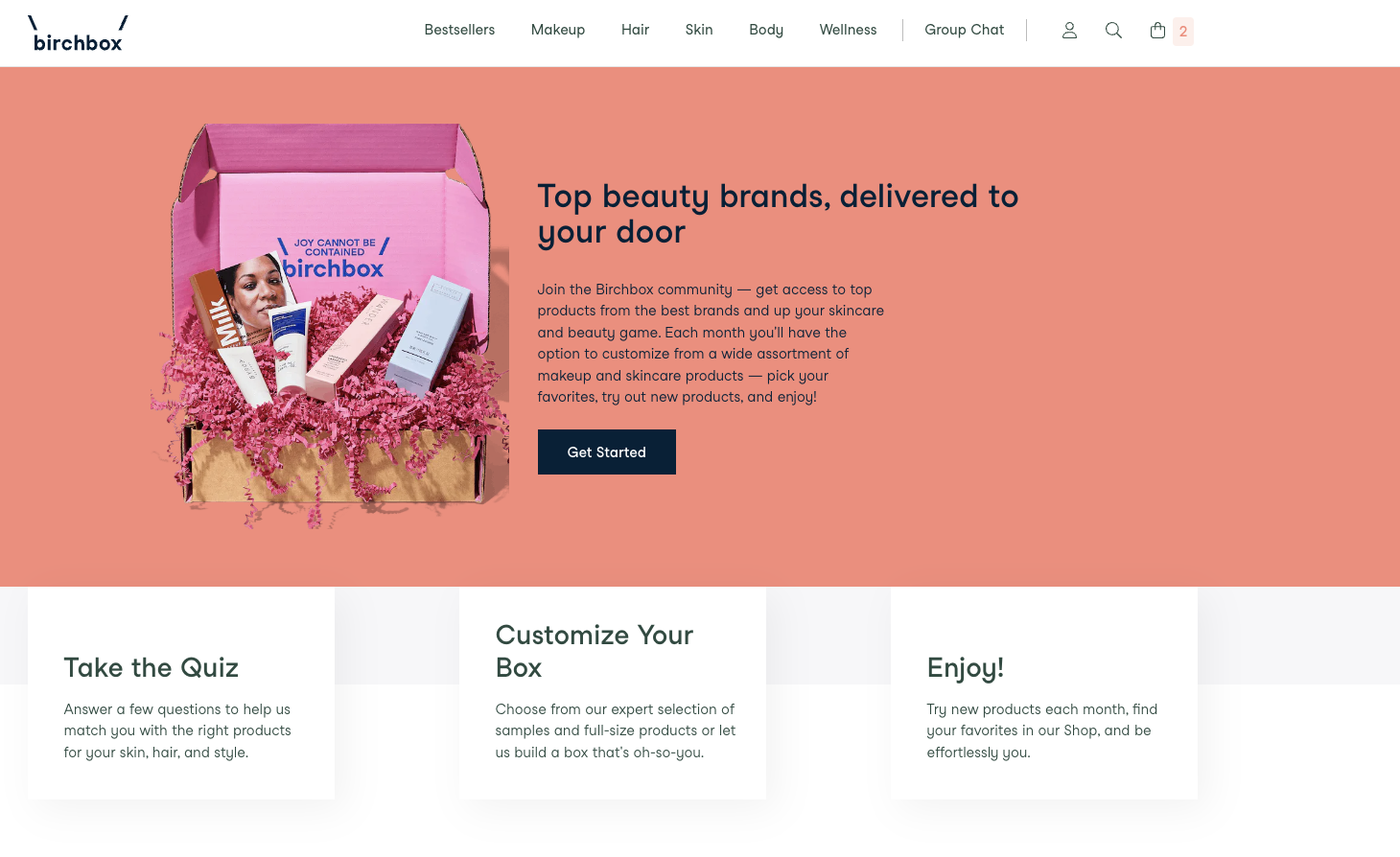
After capturing customer data, Birchbox recommends products based on customer needs.
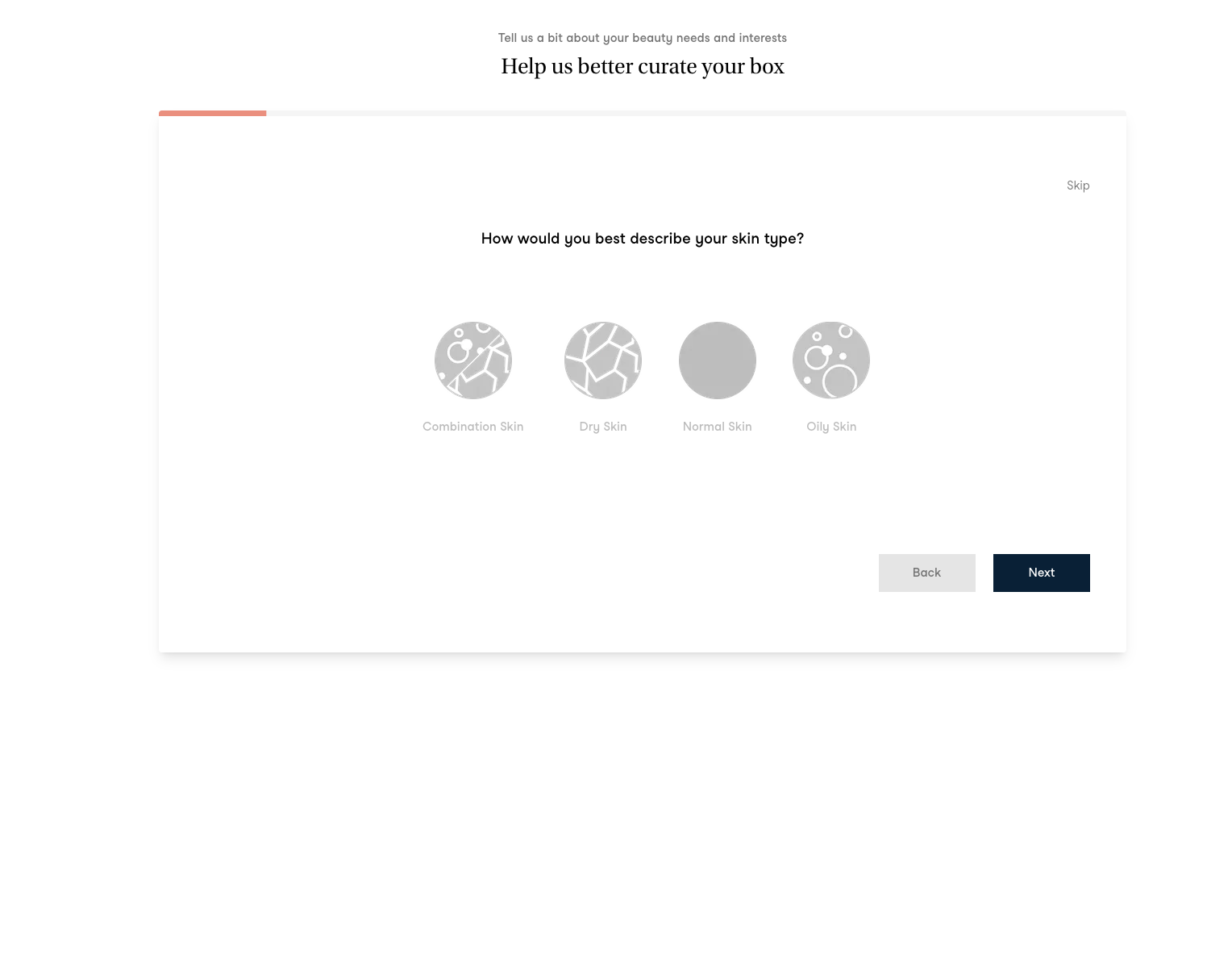
Cross-sell & Upsell
Cross-sell and upsell recommendations should feel natural and helpful rather than pushy. For instance, suggesting accessories or higher-tier versions of products customers are viewing rather than random items. Only show recommendations when genuine opportunities arise.
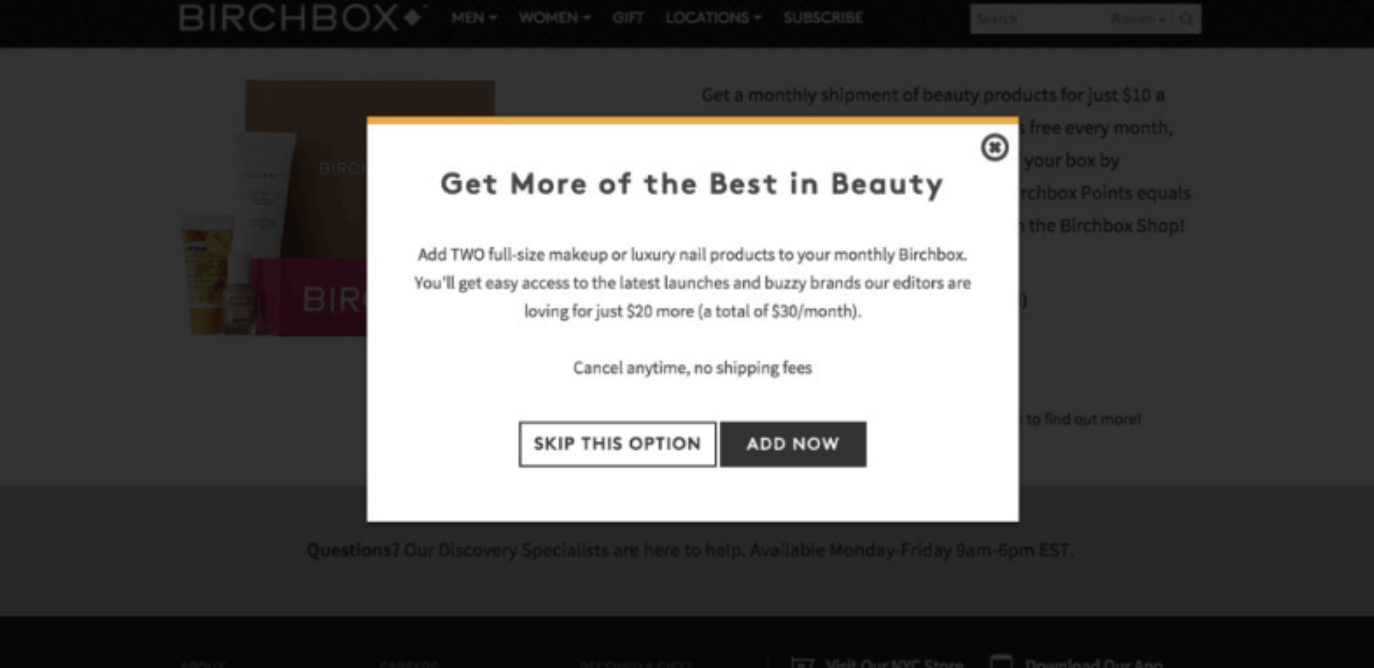
Step 4: Optimize Your Shopping Cart
Your shopping cart experience also affects evaluation and ultimately conversion rate. The ideal end goal is to clarify what the customer needs to do at each step, and then move them down the funnel to complete the check out.
Clear checkout process
The checkout process should be simple, fast, and secure. Allow guest checkout and offer multiple payment options like PayPal and Apple Pay.
Send Cart abandonment emails
Send abandoned cart emails to remind people to complete their purchases.
Birchbox sends an abandoned cart email that takes customers back to their cart, but also offers related products as well to offer alternatives:
Step 5: Optimize Your Purchase Stage
The purchase stage is the most critical point in the sales funnel - this is where transactions happen. Optimizing this stage removes barriers to completion and facilitates the customer making a purchase from your Ecommerce store.
Step 6: Create A Friendly User Experience That Maximizes Conversion Rate
User-friendly checkout
Ensuring a smooth, user-friendly checkout process is essential.
Prefilled info
Keep forms short and only request necessary information. Offer autofill for returning customers.
Guest checkout
Allow customers to checkout as a guest without creating an account to remove friction.
Multiple payment options
Provide multiple payment options like major credit cards, PayPal, Apple Pay, and Amazon Pay. Make sure your payment gateway is PCI-compliant and uses SSL encryption to reassure customers their data is secure. Clearly display trust badges as well.
Step 6: Optimize Your Post-Purchase Experience
After customers complete purchases, take them to an order confirmation page that summarizes details like items bought, shipping address, and total amount.
Order tracking
Also, provide order status and tracking information for reassurance.
Thank you email
An immediate personalized email confirmation helps delight customers with their purchase decisions. This should express gratitude and provide order details, shipping timelines, return policies, and contact information for future needs.
Step 7: Optimize Your Retention Stage
The retention stage is focused on turning first-time buyers into loyal, repeat customers. Optimizing this stage fosters brand loyalty and long-term revenue through relationship-building.
Loyalty programs
Loyalty programs incentivize repeat purchases. For example, points earned for purchases can be redeemed for discounts or free products. VIP access to sales, new arrivals, or members-only content also provides value to repeat customers.
Birchbox has a loyalty program that rewards customers for their purchases.
During the check out process, their earned and redeemed points are shown:
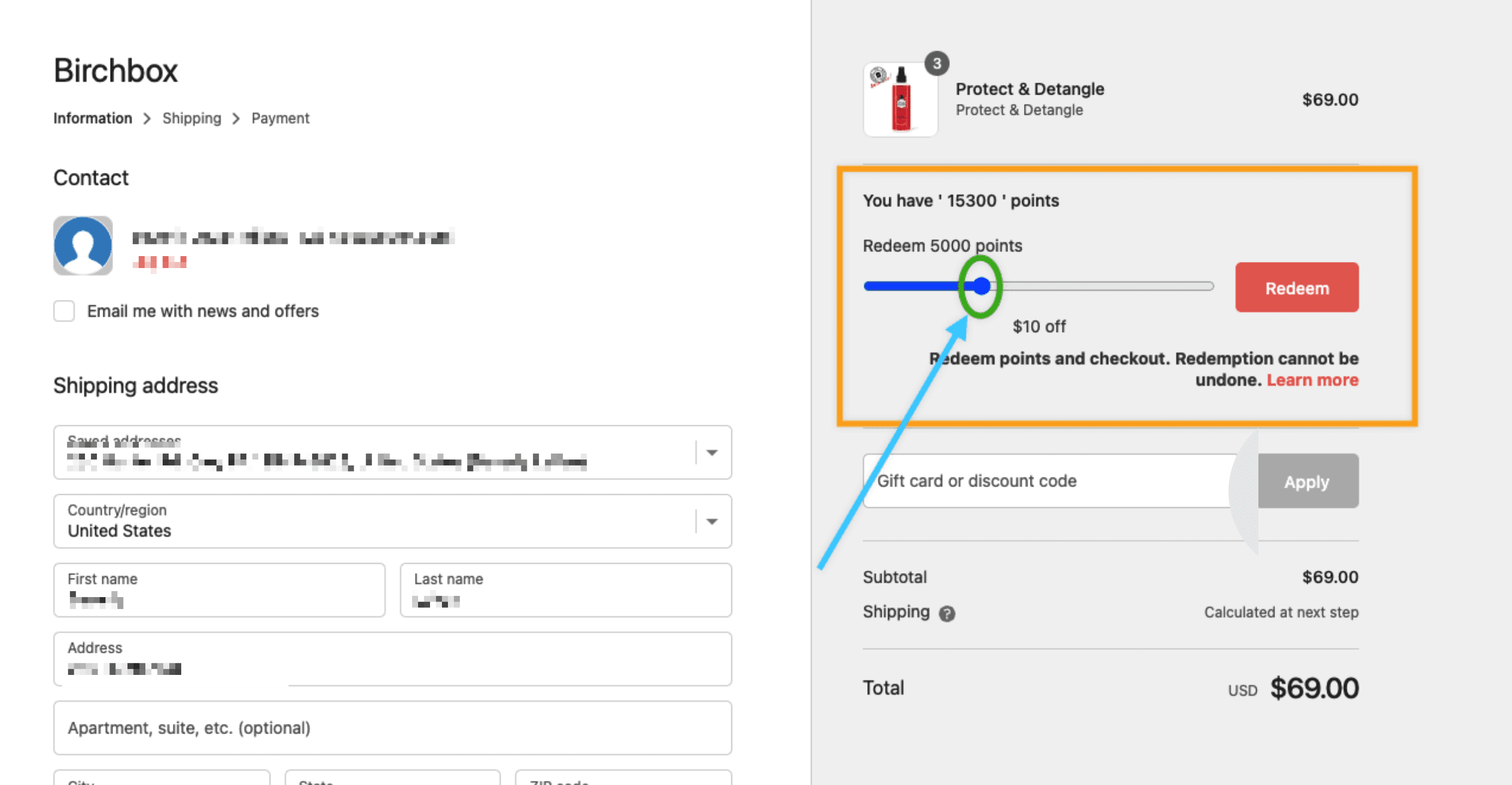
This encourages loyalty and repeat purchases, ultimately positively impacting customer lifetime value.
Step 8: Optimize Your Post-purchase follow up
Post-purchase follow-up helps cultivate relationships with customers. Send a simple thank you email or satisfaction survey to show you care about their experience. Relevant re-engagement emails with curated recommendations or new arrivals keep your brand top of mind.
Birchbox is a subscription beauty company – every month, customers are shipped products that fit their needs and interests.
Every box is customized to the specific needs of the customer, which is exactly why the onboarding quiz that captures zero party data is so important.
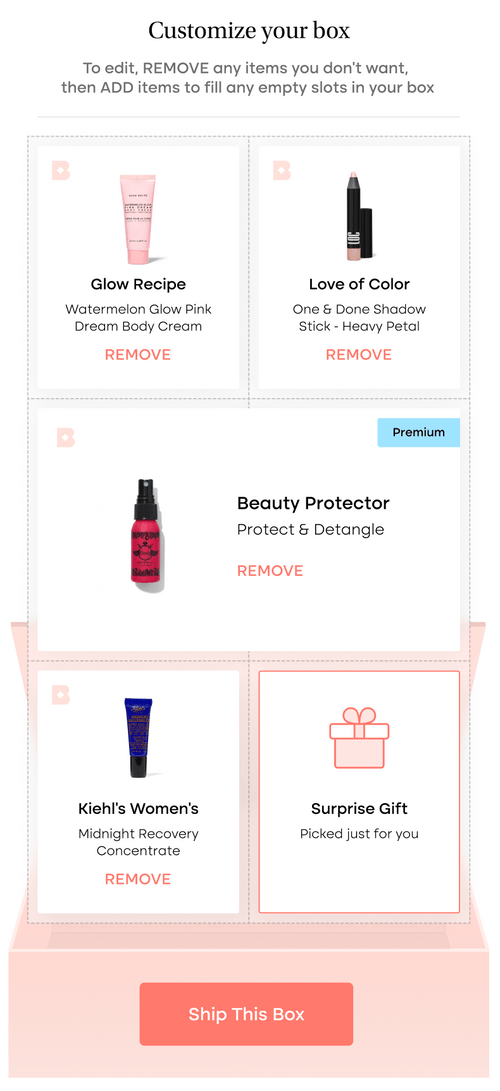
Personalized product recommendations based on purchase history and browsing behavior make customers feel known. For example, sending an email highlighting products that complement past purchases they may have missed.
Wrapping Up
Optimizing your Ecommerce sales funnel is crucial for online business success. This process strategically guides customers from initial awareness to becoming loyal, repeat buyers.
The key stages we covered include driving targeted traffic through SEO, PPC, social ads, and affiliates. Landing pages and product pages must capture interest with strong messaging, visuals, and CTAs. Keep customers engaged during evaluation with relevant product recommendations and seamless cart experiences.
Streamline checkout for painless purchases. Post-sale, build loyalty through confirmations, surveys, recommendations, and VIP incentives. When you optimize for awareness, interest, evaluation, purchase, and retention, conversion rates and revenue increase.
To learn more about optimizing your unique Ecommerce sales funnel for maximum results, book a free demo today. Our team of experts can assess your current funnel and provide proven recommendations to increase conversions. Let's discuss how to accelerate online sales and profit together!


